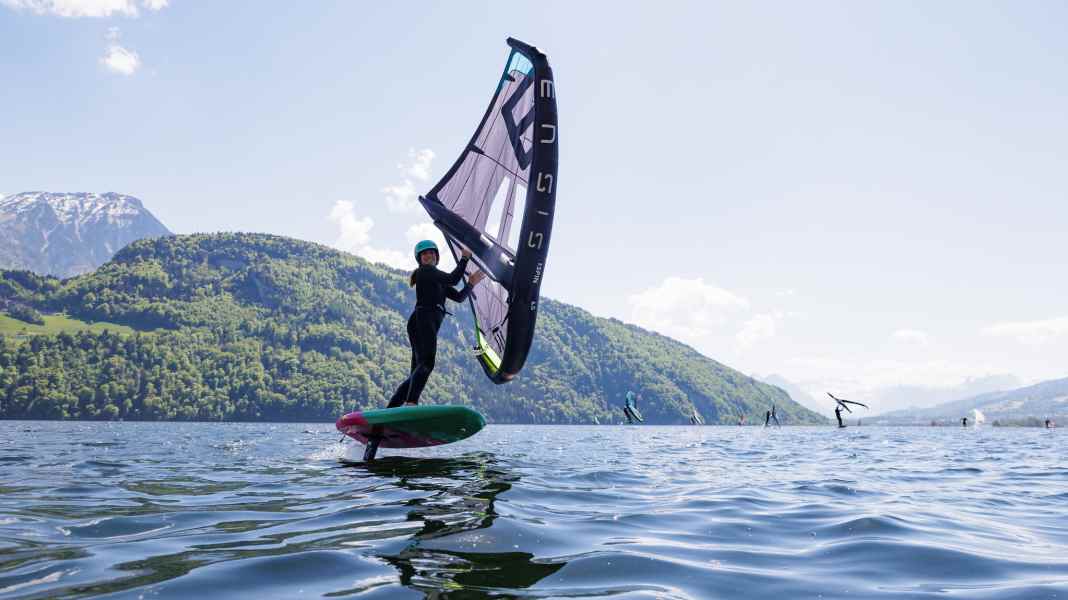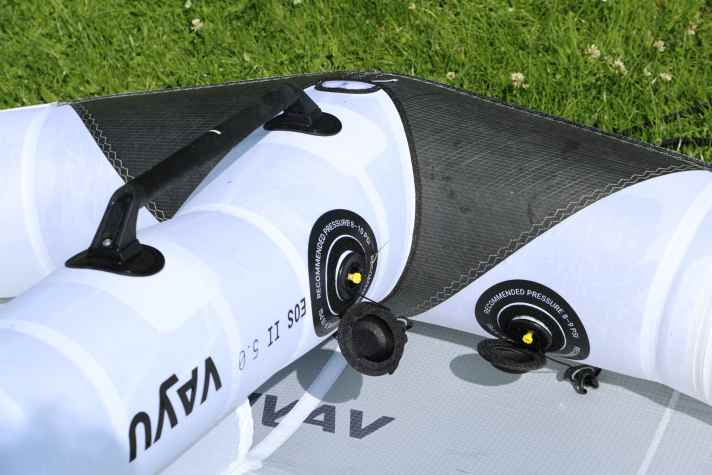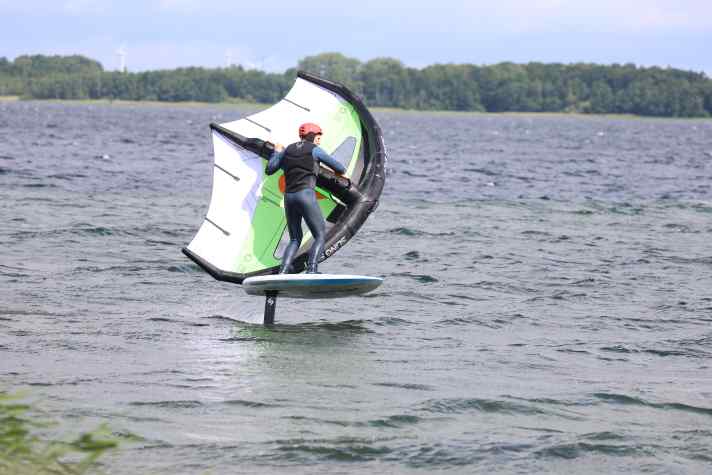
Anyone who has started wingfoiling knows the situation: you're bobbing around while others are relaxing on the foil. The simplest solution would of course be to use larger equipment - but not everyone is equipped accordingly and can use different wing sizes, Midlength boards or larger ones. The following tips will always help.
Observe gusts
The wind is often not very constant, especially on inland waterways. Only in the gusts is it enough to take off, in the holes in the wind you have to hold on. For this reason, you should sail tactically in light winds. Background: You need more wind to go upwind than on a half or full wind course. So if you luff too much in a wind hole, your speed will drop and the board will stall. Therefore, use the gusts to switch to a closehauled course. Build up a buffer in the gusts that you can draw on. If the wind scratches the lower limit between gusts, you can often save yourself until the next gust by dropping to a light downwind course. In gusty light winds, you don't sail a straight line, but often a serpentine line.

The more experience you have as a water sports enthusiast, the more foresighted you can be when foiling, because the gusts don't come suddenly, but are visible as dark stripes on the water. So always keep your eyes open and check the surface of the water upwind for shadows!
Reduce filling pressure in light winds
Almost all wings have become significantly stiffer in recent years, not least thanks to special materials such as Aluula or high-strength cloth material. The advantage of such tighter designs is a greater wind range in strong gusts. At the other end of the scale, in absolute light winds, this advantage sometimes turns into a disadvantage. In order for your wing to pump efficiently, it needs a certain amount of flexibility. For this reason, it is advisable to reduce the recommended inflation pressure by about one psi in marginal winds.

This is particularly true for very light riders (<70 kilos), as the desired tread is often not formed sufficiently with normal inflation pressure.
Customise foil setup
A larger foil is of course worth its weight in gold in light winds, but changing the position can also bring an advantage. For conditions in the lower wind range, it makes sense to move the foil one to two centimetres forwards compared to the standard position - this provides a little more lift and can support an early take-off.
Turn round cleverly
Are you fighting for every bit of speed to stay on the foil, but there's no gust in sight and the shore is getting closer and closer? Then you should quickly throw the idea of a tack overboard, because all manoeuvres into the wind are inherently associated with more speed loss than jibes. Two tricks can help:
Utilise shaft thrust
Small waves also help to maintain speed when you tap into their energy. Therefore, try to time your jibes so that you are in front of a small wave crest at the end of the manoeuvre. The "downhill run" can be worth its weight in gold in this phase and prevent you from dropping off.

Alternative jibing variants
In light winds, you overtake the wind during a "normal" jibe. The relative wind (perceived wind) comes from the front at this moment, which can cause your wing to develop a braking effect - you lose too much speed. But there are jibe alternatives that get round this problem and make it easier to foil at the lower wind limit. These include, for example, the Heineken Jibe, the Race Jibe and, above all, the Duck Jibe. The latter in particular is a simple and efficient technique for light winds. You can find a complete tutorial HERE.
